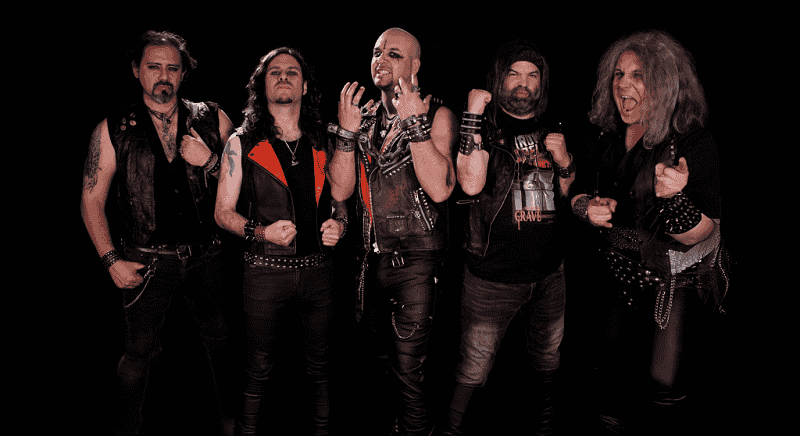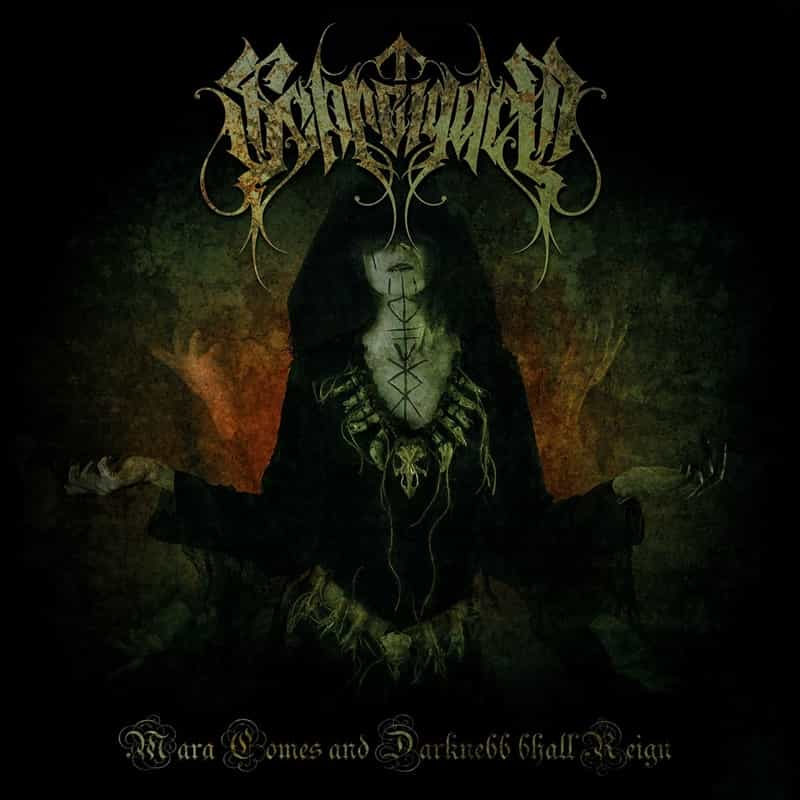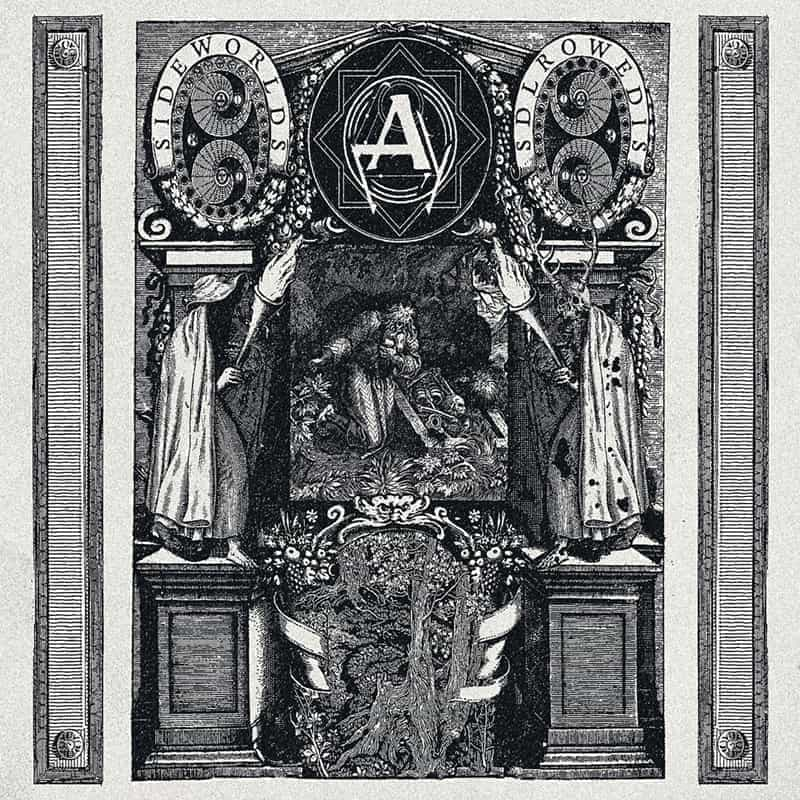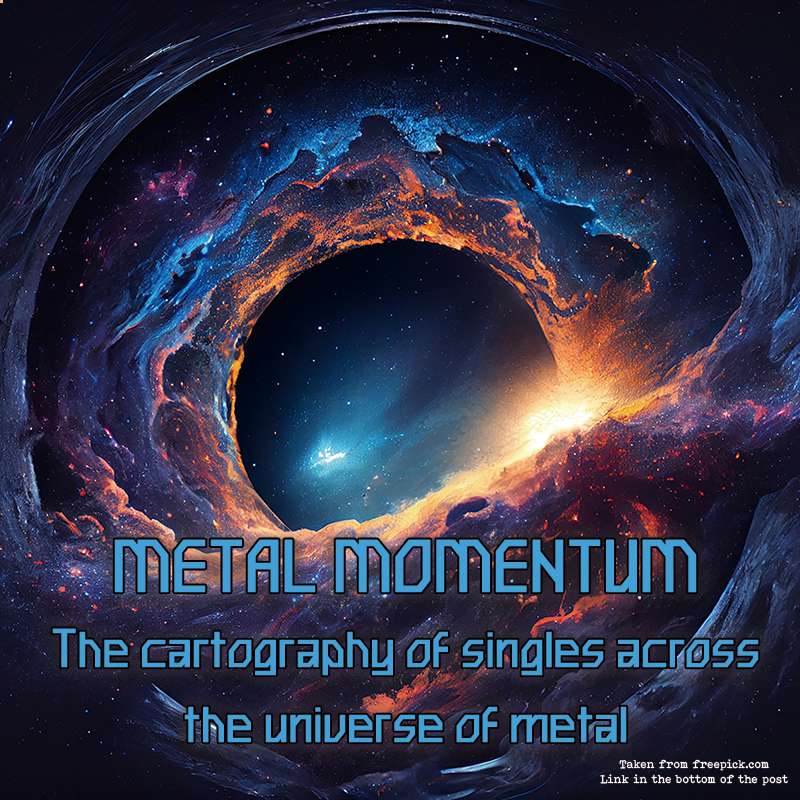Album Review: Iron Spell – From the Grave

Band: Iron Spell
Album: From The Grave
Country: Chile
Release Date: July 25th, 2025
Label: Dying Victims Productions
Format Reviewed: High Quality Digital Recording
Album Review: Iron Spell – From the Grave via Dying Victims Productions by Elyna
“Iron Spell delivers “From the Grave”, an album rich in storytelling and symbolism, capturing the spirit of classic heavy metal while reflecting on archetypal themes of darkness and resilience.”
To be honest, my thing is Finnish metal, so I don’t know many Chilean heavy metal bands. Shame on me, but I have the feeling that there are way more extreme metal bands than heavy metal ones in Chile. So it’s always positive to find bands faithful to the NWOBHM of the 80s. On that note, today I’ll delve into the new drop of one of the leading names in the Chilean heavy metal scene, Iron Spell, and their second album, “From the Grave.” This new offering was released on July 25th via Dying Victims Productions, coming nine years after the release of their debut, “Electric Conjuring,” in 2016.
Iron Spell’s current lineup consists of Merciless on vocals, Ivlock on bass, Raiden and Terry on guitars, and Steelhammer on drums. All of them, to a greater or lesser extent, participated in the musical and lyrical composition of “From the Grave,” which consists of ten tracks, with a total running time of just over 40 minutes.
The adventure begins with the electrifying “Curse of the Ushers,” running for 4:15 minutes. The story is inspired by Edgar Allan Poe’s “The Fall of the House of Usher,” which narrates a character’s visit to a mysterious and decaying mansion inhabited by Roderick and Madeline Usher. The house here has a powerful symbolism; on the one hand, it represents the inevitable decline of a corrupted, cursed lineage. That house holds a dark secret; it is alive and carries a powerful family curse, which manifests itself in various supernatural phenomena. The story ends with the house collapsing, amid desperate screams and disturbing presences.
Looks like the lyrics tell a Poe story, but there’s more to it than that. If you take the sword of omens and “look beyond the obvious,” the house and the fall of the structure are also symbolic of madness, the breakdown of reason, and the collapse of personality when chaotic demons attack the mind of a human being.
Structured in a steady 4/4 time signature, “Curse of the Ushers” features a catchy mid-tempo Andante rhythm, with slight variations throughout. At the kick-off, it hit me with strong Deep Purple vibes. Then, the verses and the catchy chorus evoked an eighties Judas Priest. Yngwie Malmsteen’s sound also influences the central bridge, which evokes the sensuality and mysticism of the Middle East. The atmosphere here is anthological; a fusion of neoclassical metal, and nods to the song “Egypt” by Symphony X. The guitars, the solo, the rhythmic base, and the powerful bass in this section create an epic within another, setting the stage for the final chorus and the abrupt end. The result is a piece that balances virtuosity, mystery, and energy, managing to capture the essence of classic metal.
“Sorceress” is the second track, lasting 3:42 minutes. Here, we are introduced to the archetype of “The Sorceress” as a symbol of the dark and destructive corners of the human mind; an addiction, a toxic influence, an obsession, or an open wound that manipulates and controls the individual’s mind. The mention of memory loss and control represents a reflection of the breakdown of personality, of being “fragmented”. It also echoes the intense internal struggle against thoughts, ideas, emotions, and feelings that wear us down and trap us. In short, “The Sorceress” is the narrative of the psychological conflict between wanting to break free from chains and the antagonistic feeling of being trapped in toxic cycles of dependence or fear.
“Sorceress” evokes Iron Maiden’s NWOBHM sound. It features powerful riffs in the verses and more melodic ones in the choruses, along with a solid rhythmic base. The song’s steady 4/4 time signature and engaging Andante mid-tempo draw you in, leading you through dark labyrinths due to its tense and enveloping atmosphere, perfectly consistent with the lyrics. The instrumental bridge features a spectacular neoclassical solo, lending mysticism and mystery to the whole track. This is followed by brilliant harmonic guitars and a change in key, providing an extra dose of emotionality. The vocals, on the other hand, move within a melodic register and display versatile power, adapting to the moments of restraint and explosion that the track presents throughout. The hypnotic nature of the chorus stands out, offering harmonies that alternate between balance, sensuality, sobriety, and incendiary explosiveness. All these elements create a piece in the purest classic heavy metal style, but with a strange freshness that enchants even the most demanding metalhead. “Sorceress” music mesmerizes from the first note and doesn’t let go until the final fadeout, making it clear that metal is more alive than ever.
“Release from Darkness” is track 3. This track introduces resilience as its central topic. It depicts the human power to move forward, the desire to overcome madness, and to shatter the chains that bind the human soul, represented by evil spirits and watchful evil eyes. It explores the inner battles of a protagonist whose character has been forged in adversity, seeking to free himself from his darkness and from certain evil forces that torment him. The image of the hammer and fire symbolizes the idea of change through trials, and transformation through the “blows” of suffering, represented by dark spirits and watchful evil eyes.
“Release from Darkness” follows a 4/4 time signature with a mid-to-fast tempo. Sound-wise, this song has strong vibes of Ozzy Osbourne, Mercyful Fate, Dio, and Deep Purple. The drumming is particularly striking, combining furious bass drum beats with intense rolls, reinforcing the epic vibe of the track. The guitars feature powerful melodic riffs, surprising with alternating progressions that create contrast between dark and bright moments, in line with the lyrical development. The electrifying interlude features the solo; intense, raw, faithful to those solos that blew our minds back in the 1980s. And without the “plastic neatness” that abounds these days… On the other hand, the bass acts as a backbone, maintaining firmness and cohesion with the drums, providing depth and character. Finally, the voice displays a raw, dynamic timbre, ranging from mid-tones to fiery explosions that interact with the narrative and melody in a balanced and consistent way. Thus, “Release from Darkness” appears as a faithful tribute to classic heavy metal, combining power, emotion, and authenticity, spanning generations of fans who love good old-school music.
The fourth track is the surprising “While Witches Dance.” This 5:28-minute instrumental emerges as a tribute to classic heavy metal, yet with nods to power metal. It presents an attractive, undulating mid-tempo, with brief fluctuations in the rhythmic pattern that provide richness and dynamism. Sounds of Helloween, Manowar, and Iron Maiden emerge. Even in the opening riffs, I recognized echoes of Pantera and even Metallica in a masterful fusion of different eras of the genre, and a spectacular display of nuances, textures, and power. Like any good instrumental, “While Witches Dance” manages to solidly integrate all the elements of the whole, standing out for its balance and cohesion. The guitars take center stage, as in most heavy metal instrumentals. Between vibrant harmonic riffs, sharp and raw slides, furious picking, and an anthology-worthy solo, the song moves through various moments and atmospheres, managing to stand out as another of the album’s best. “While Witches Dance” not only pays tribute to heavy metal tradition but reinterprets it, with a musical narrative that is both intense and evocative.
The fifth track is “Whispers of Sorrow,” deeply melancholic and symbolic. Narratively, it speaks to loneliness, the loss of loved ones in the face of life’s inevitable passing, and the weight of painful memories that haunt the protagonist, like endless echoes. The distant voices, shadows, and emptiness reflect a process of internal mourning, with sadness as a faithful companion in a setting that demonstrates life’s fragility and brevity.
“Whispers of Sorrow” is structured in 4/4 time, with an Andante tempo, but close to Adagio. Its atmosphere and sound evoke the melancholic and dark ballads of Dio, Queensrÿche, and even Dream Theater, combining clean guitars with electrifying riffs that explode with emotional and nostalgic intensity. The bass, meanwhile, stands out for its warmth and depth, while the drums play heartfelt syncopated rolls that heighten the sense of melancholy and hopelessness. The guitar solo is filled with emotion thanks to its emotive vibratos, which feel like a cry of anguish amid silence. Finally, the vocals reach their most emotional register, conveying anguish, loneliness, and strength at the same time, fitting perfectly into the moments of calm and explosion. “Whispers of Sorrow,” in short, marks a deeply introspective moment, an intense sigh charged with interpretive and melodic force, which broadens the emotional spectrum of “From the Grave.”
“Devil King” appears sixth, clocking in at 4:49. The lyrical narrative points directly to those who manipulate people’s minds behind the Fourth Estate: the mass media. It is a critique and a warning against the media and its role as a weapon of mental and social reprogramming. Through media manipulation and institutionalized propaganda, the narrator presents the Devil King as the archetypal representation of the figure of power. This evil King uses both technology and mass media to weaken critical thinking inherent in human beings, shape and establish perceptions in the collective unconscious through regimes of truth presented as absolute and unquestionable, and establish ideologies, prejudices, and toxic beliefs through bombastic headlines designed by those who believe that “language creates realities.” Under the pareidolia of false security, progress, and social order, the ultimate goal of this entire machinery of collective manipulation is to subdue human will and thus establish a new centralized world order without encountering resistance. Individuals are divided into thousands of subgroups, with irreconcilable “differences” (mental programming) among them in some cases, losing autonomy, the capacity for unity, and struggle. Thus, human beings hand over control of their lives to a central figure who controls everything. Power is concentrated in a few figures, and the reset begins.
“Devil King” features a 4/4 time signature and an andante mid-tempo, which conveys a sense of imminent war, like the start of a war cry from the first second. The riffs kick off sharply over a marching rhythmic base, evoking Helloween’s “March of Time,” Judas Priest at their most explosive, Accept, and the maestro Dio. The choruses feature harmonic progressions that approach the epic sound of Helloween and Manowar. The drums are steady and catchy, maintaining a constant attack with double bass drums and precise rolls, enhancing the intensity during time signature changes. The bass is very present, stretching out like a canvas on which everything else is precisely articulated. The central solo is an explosion in the purest NWOBHM style, unfolding brilliant ascending scales, where the two-part harmony creates an atmosphere that resembles a duel between two opposing forces that complement each other. The voice, for its part, alternates between a furious high register and low notes, which give a sense of urgency, threat, and warning, increasing the sense of conflict and confrontation that the lyrics suggest, and adding drama and theatricality to the whole.
Ultimately, “Devil King” captures the most aggressive essence of classic metal, over a marching rhythm that puts you in tune with the fight against the oppression of dark forces that seek to dominate the mind with false narratives. Amidst incendiary riffs, explosive drum rolls, and a vibrant atmosphere charged with drama and urgency, “Devil King” invites all current and future generations to prepare to resist and defeat the coming war. Because this new war isn’t about money or power, this time, the true prize is the control of the human mind and will.
The next stop in this story is “Deep in the Night.” At 3:31, the song is set in 4/4 time with a steady mid-tempo. The intro kicks off with sinister orchestrations evoking King Diamond, Ozzy Osbourne, and Black Sabbath, while the verses, choruses, solos, and bridges evoke Judas Priest, Iron Maiden, and even Whitesnake and Mötley Crüe. The rhythmic base is enveloping, with a dense bass that marks the hypnotic pulse, and guitars that alternate riffs with sharp chords. The solo is restrained but powerful. The drums maintain a constant groove, with subtle accents that reinforce the song’s dark, urban, and menacing atmosphere. The vocals move between lower registers and more intense moments, in keeping with the lyrical narrative. In short, “Deep in the Night” is a track that represents the most classic of classic metal, if you’ll pardon the redundancy.
Now, beyond the musical aspect, “Deep in the Night” opens the space for reflection on the way certain female archetypes are treated in rock and metal lyrics. The reference to the Gorgon evokes the story of Medusa, whose true tragedy is often omitted: she was raped by Poseidon. And instead of receiving justice, she was punished by Athena, who transformed her into a hideous monster. This story echoes the experience of thousands of abused women around the world, even within their families. Instead of receiving support, these victims are isolated, discredited, and revictimized every time they must recount what happened to them, while their attackers go unpunished. Regarding prostitution—and fully owning my words—the lyrics that present women as superpowered, evil forces, the archetype of men’s downfall, validate and perpetuate the general narrative that minimizes men’s responsibility and capabilities. The sex trade indeed is one of the most lucrative businesses in the world, but that market wouldn’t exist without clients. Therefore, attributing men’s fall into the clutches of the woman of the night is to deny that men have free will and the ability to decide what to do. These types of representations, which turn men into passive victims and women into the culprits of their downfall, deserve to be questioned, analyzed, and reformulated, in my humble opinion. Thus, “Deep in the Night” combines a hypnotic atmosphere with lyrics laden with symbolism, although it also invites a critical reflection on the feminine archetypes used in the genre and the narratives they perpetuate. This contrast between the power and groove of the music and the conceptual debate of its lyrics, however, enriches the listening experience, showing that heavy metal is not only about virtuosity but also a space to question and rethink archetypes rooted within the genre.

“Black, Hot & Heavy” is another of the album’s highlights. Structured in a steady 4/4 time signature with a diverse rhythm that varies from medium to fast, the song powerfully evokes the sounds of legends like Sabaton, Saxon, Judas Priest, Accept, and Running Wild, becoming a tribute to heavy metal in its purest form. It kicks off with smashing, galloping riffs that create an epic and vibrant atmosphere. The rhythmic base aptly alternates tempos, lending versatility to a classically old-school heavy metal track. Meanwhile, the guitars stand out for their rawness and intensity, taking us back to the past, to the early days of the NWOBHM and the magic that drew so many of us to the path of metal. This sensation is enhanced by an aggressive vocal display that truly surprises with its visceral quality, strength, and excellent vocal work, a quality that rivals that of the genre’s greatest exponents.
Lyrically, “Black, Hot & Heavy” revolves around the image of the mirror as a symbol of identity, and when one’s reflection disappears, it’s about the loss of self. The character cannot recognize himself when he sees himself in the mirror. Instead, he sees a silhouette covered by a shadow, an evil force “black, hot, and heavy,” and then becomes “dead in life” as this entity takes over and transforms him into a mere host. The mirror becomes a portal, a singularity that catalyzes demons or entities that take over the protagonist. By the way, this imagery of the mirror, the reflection, and the black, hot, and dark shadow took me straight to Isengard, with Saruman manipulating the Palantir, swearing that he was the one who saw the Dark Lord’s plans, when the reality was just the opposite; the great white wizard was slowly falling into deception, being possessed by the spirit of Sauron. As you guys may notice, the symbolism is powerful in this section and open to various interpretations, in addition to demonic possession. The shadow in the mirror can also be seen as an addiction, a harmful ideology, religious fanaticism, abusive and toxic relationships, or any other circumstance where the true “self” is displaced by an external force that takes control of the will and the mind. So, guys, be very careful with mirrors… we don’t know who or what is watching us.
Thus, “Black, Hot & Heavy” is not only one of the album’s most intense and remarkable takes, represents the original spirit of heavy metal. The powerful symbolism, though classic in horror stories, is an open invitation to be very careful with the reflections of ourselves, and with the mirror-like eyes we leave open to those we hold dear as witnesses to our lives. Remember: we don’t know who’s watching.
What followed was completely unexpected for me. I’m used to songs that name albums being full-length, at least three minutes long. However, “From the Grave” is a brief instrumental moment, barely 1:22. Brief, quite brief… but spectacular. The enigmatic chords and picking, along with the intense harmonic riffs, evoke the sounds of Helloween, Dark Moor, Metallica, Blind Guardian, and Iron Maiden, among other great metal legends. The magical orchestration, with dissonant tones and a flat scale, masterfully fuses nostalgia with tension and mystery, creating an atmosphere reminiscent of a cult film. These elements make “From the Grave” a strange but enchanting moment of tension and magic, which appears as a backdrop just before the final act opens.
And reaching the end of the journey comes track number 10, “Children of the Night,” with a running time of 6:21. Narratively, the story reminded me of the legend of the Draugr in Nordic mythology, the dead who rose from their graves periodically to punish and eliminate the living, especially those who had wronged them. They possessed supernatural strength, could cause storms, and would not rest until their revenge was exacted. “Children of the Night” follows this same thematic line, developing a story featuring dead children thirsting for revenge and justice. Thus, “Children of the Night” is a demand for justice in the face of human evil and the murder of innocent beings at the hands of the “Evil Man.” Because karma exists, and everything is paid for in this life…or the next.
In terms, “Children of the Night” is a dark metal ballad with a diverse rhythm that ranges in sound from an epic march to a walking tempo, all developed in 4/4 time. Its sound strongly evokes the atmospheres of Ozzy Osbourne, Blind Guardian, and King Diamond, combining melodic passages with moments of great intensity. This approach achieves a balance between tense lyrical emotion and the powerful force of the melody. The vocal performance and chorus, featuring heartfelt children’s voices, add a layer of tension that intensifies the song’s unsettling and supernatural atmosphere. The guitars alternate between intense riffs and haunting melodies, while the bass and drums maintain a solid foundation that transitions fluidly between moments of calm and bursts of energy. Overall, “Children of the Night” is a solid album closer, combining a haunting and vindicating narrative, a wealth of emotional intensity, and a generous display of musical power into a remarkable, symbolic, and evocative experience.
That being said, and purely in terms of sound and production quality, the album leaves room for improvement. Having listened to each song carefully, I noticed that the mix tends to lower the overall volume, opting for a “garage” sound that, while providing rawness and personality, sometimes sacrifices clarity and power, diminishing the impact of the riffs and vocals. Given this, I wonder if this setup, which limits the strength and clarity of the instrumental and vocal work—which is of a very high level, by the way—is really necessary. In my opinion, classic heavy metal, no matter how classic it may be, deserves a sound that enhances its energy and artistry, not one that weakens it under a low volume or a vintage sound preset. This production decision may be a stylistic trait or simply a technical limitation, but it invites the band to reflect on maintaining the “eighties underground” sound or returning to the clarity and power they displayed on their debut album. Thus, the richness of his composition and instrumental and vocal performance can reach fans with greater intensity and power.
In a nutshell, “From the Grave” is a work that demonstrates Iron Spell’s love for classic heavy metal. Each song has its authentic spirit and a diverse lyrical narrative, filled with symbolism and deep emotions. Although the production could use some improvement in clarity and volume to allow the music to shine with all its energy, as was the case with their debut, “Electric Conjuring,” the album manages to convey that passion and connection to the roots of the genre that is home and cradle for us fans. Without a doubt, “From the Grave” is an important contribution to the Chilean and international metal scene, and to those of us who love heavy metal made with guts, conviction, and true love. 8/10
Band
Facebook
Instagram
Bandcamp
Spotify
Label
Site
Bandcamp
Instagram
Facebook
8/10 To Greatness and Glory!
**Please support the underground! It’s vital to the future of our genre**
#WeAreBlessedAltarZine
#TheZineSupportingTheUnderground


